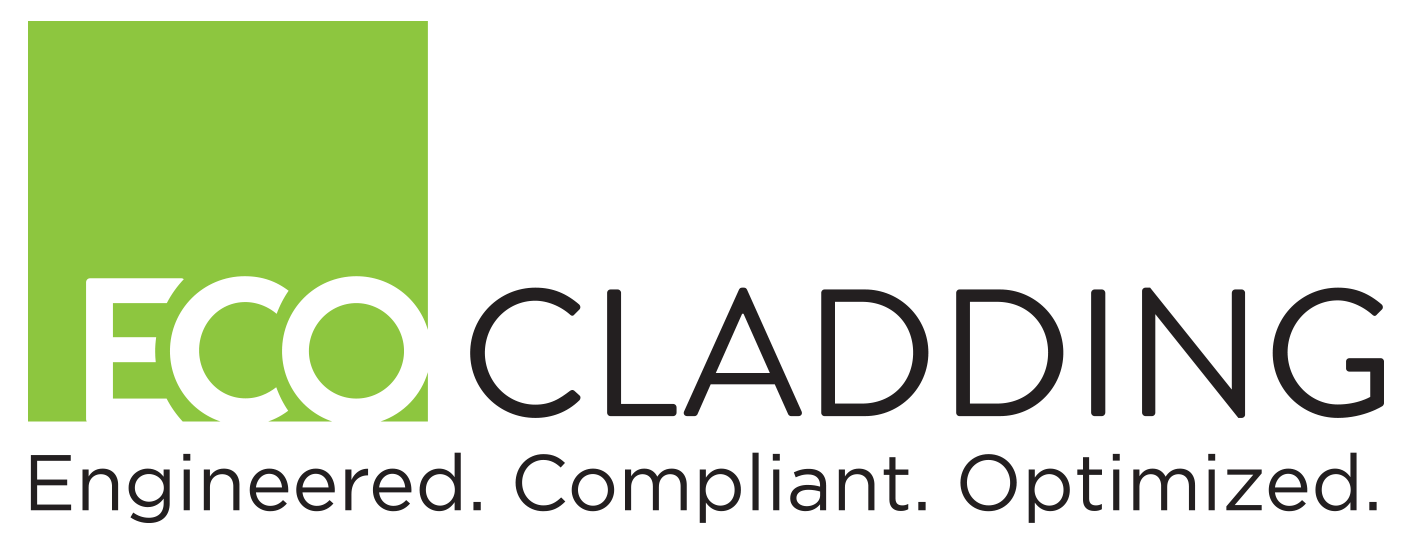Our systems are not a trigger for NFPA 285 Fire Tests
Published by the National Fire Protection Association, NFPA 285 is a standard test method designed to evaluate the fire propagation characteristics of exterior wall assemblies with combustible components. Walls containing combustible components may contribute to fire spread vertically and horizontally. NFPA 285 is the standard recognized in the International Building Code® (IBC) for fire testing of exterior walls containing combustible materials such as foam plastic, continuous insulation, water-resistant barriers, and combustible exterior wall coverings. For Type I – IV buildings containing these combustible materials, with few exceptions, the IBC requires testing if the wall exceeds 40 feet, but often requires testing down to grade. As an assembly test, NFPA 285 is designed to evaluate the entire wall assembly, as opposed to individual materials or components.
Are ECO Systems Compliant?
All of ECO Cladding’s system components are non-combustible and are not triggers for the NFPA 285 requirements in the IBC. Our components are made of raw aluminum and stainless steel. These metals qualify as non-combustible per IBC language. Other components in the rainscreen assembly, such as the weather barrier, insulation type, cladding panel, etc. may trigger the requirement for NFPA 285 testing but nothing supplied by ECO Cladding is combustible in nature and therefore will not be a contributor to assembly combustibility for NFPA 285 fire tests. ECO Cladding systems do not contribute to the number of combustible materials in an assembly and specifying our systems may provide extra flexibility in design, that cannot be achieved with combustible framing materials.
Criteria for Fire Performance
For building heights of less than 40 feet, IBC fire performance requirements are defined in the architectural specifications. In general, the specifications are limited to a flame spread and smoke-developed value as defined for a Class A material in accordance with ASTM E84 (that is, a Flame Spread Index of not more than 25 and a Smoke Developed Index of not more than 450). For High Rise exterior wall panel applications, primarily installations higher than 40 feet above grade, the IBC imposes specific fire performance criteria for use of combustible exterior cladding. Subject to certain exceptions, High Rise applications in buildings of Type I, II, III, or IV construction generally require the use of non-combustible cladding and framing. The recognized method used to determine non-combustibility within the code is the ASTM E136 test.
Testing and Approval
In a given rainscreen assembly, if any of the specified components trigger NFPA 285 and the wall assembly has been successfully tested to meet the NFPA 285 criteria for approval, Fire Safety Engineers have consistently stated that the same configuration with ECO cladding components will perform the same or better than the original design. To meet the needs of hundreds of projects, we have tested both our exposed and concealed systems with many combustible cladding material types (HPL, ACM, Plastic Composites, etc). We support the role of fire safety testing in evaluating the overall fire performance of each wall assembly. With the exponential increase in High Rise building construction in the United States, it is critical to ensure that the entire rainscreen wall assembly meets the code requirements in order to be safe, secure, and suitable for the intended application.
Questions? Need to know more? Call us at 855-237-3370 or email info@ecocladding.com.
Download a PDF copy of this Tech Note here.

